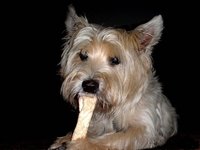Duckies at Burdette


blogged by me!
ShutterFreak
at
11:25 AM
1 comments
![]()
Labels: Burdette Park, Canon 30D, Canon 400mm, Ducks, Evansville, Indiana, Nature, Photos, water, Wildlife
blogged by me!
ShutterFreak
at
5:07 PM
1 comments
![]()
Labels: Birds, Canon 30D, Canon 400mm, hummingbirds, Illinois, Nature, Photos, ruby-throated, Wildlife, wings

I grabbed the little Canon P&S, jumped out of the car and started taking shots …. Mother was with me and she was just amazed at the beauty of this thing. Now, I could kick myself for not taking the time to change lenses on the DSLR and getting some decent images.
View this image at the larger size to see how pretty it is.
blogged by me!
ShutterFreak
at
2:40 PM
0
comments
![]()
Labels: Canon A720, Dolans Lake, Fungi, Illinois, Nature, Photos
blogged by me!
ShutterFreak
at
6:16 PM
0
comments
![]()
Labels: Ardea herodias, Burdette Park, Canadian Geese, Canon 30D, Canon 400mm, Evansville, geese, Great Blue Heron, Indiana, Nature, Photos, Wildlife, wings
One lone Double-crested Cormorant on the lake yesterday ….
The double-crested cormorant is a little more than two feet long with a wingspan of about four feet. It has dark brown to black feathers, a long hooked bill with an orange throat pouch, a long tail, and webbed black feet. Adults have tufts of feathers over their eyes. Males and females look alike.
Cormorants dive for fish and marine invertebrates from the water's surface. After catching a fish, the cormorant surfaces, flips the fish in the air and swallows it head-first.
The double-crested cormorant doesn't have well-developed oil glands and isn't waterproofed very well. It often dries its feathers by perching on a pole or tree limb and stretching its wings out.
blogged by me!
ShutterFreak
at
9:07 AM
1 comments
![]()
Labels: Birds, Canon 30D, Canon 400mm, Cormorant, Illinois, Nature, Photos, Wildlife
blogged by me!
ShutterFreak
at
10:40 AM
0
comments
![]()
Labels: Burrells Woods, Canon 30D, Canon 400mm, Illinois, Leaves, Nature, sunight
It will make you laugh …..
blogged by me!
ShutterFreak
at
8:54 AM
0
comments
![]()
Labels: funny
Two sources for the Top 100
Some I agree with , most of them I don’t!
25 Best Blogs 2009
The Huffington Post??? give me a break ……
blogged by me!
ShutterFreak
at
7:26 AM
0
comments
![]()
Wheel Bug, Arilus cristatus
This silver-gray insect is the largest assassin bug. The “Wheel Bug” gets its name from the structure on its thorax which resembles a gear or saw blade. It has a
hinged Beak used to inject poisonous digestive fluids into its prey, which can immobilize it in seconds.
It is then used to extract the digested Insect or Caterpillar,
leaving only the empty skin of its victim as evidence of the event
Although assassin bugs are not considered dangerous, most can bite, and should not be handled.
I was outside talking on the phone with Jan when I saw this “assassin” on my old petunias. They are truly one ugly bug!
Look at the larger size to see just how ugly he is :)
blogged by me!
ShutterFreak
at
10:36 AM
2
comments
![]()
Labels: Assassin Bug, Bugs, Canon 30D, Illinois, Insects, Nature, Photos, Sigma 105mm, Wheel Bug

There were plenty of Great Egrets at the river yesterday, along 
blogged by me!
ShutterFreak
at
9:27 AM
0
comments
![]()
Labels: Birds, Canon 30D, Canon 400mm, Great White Egret, Illinois, Nature, Photos, River, Wildlife
